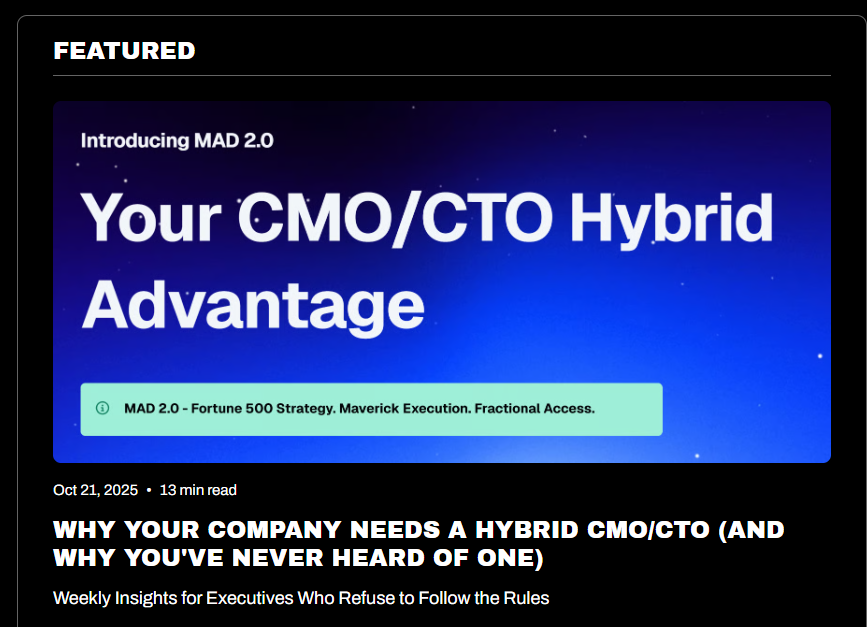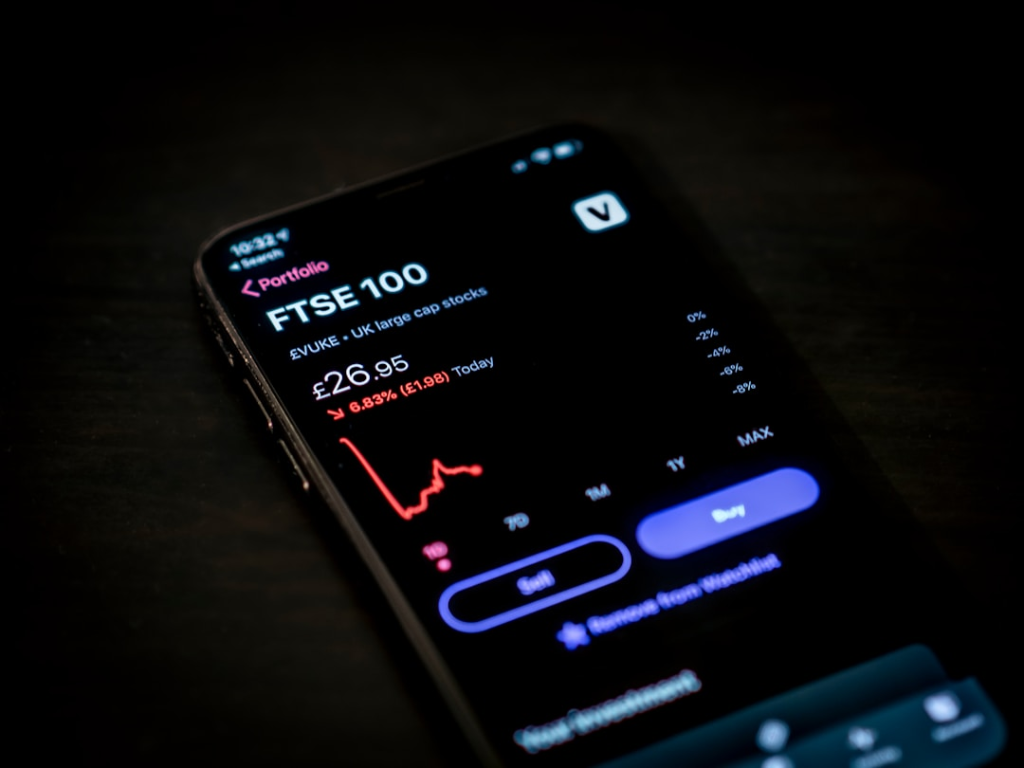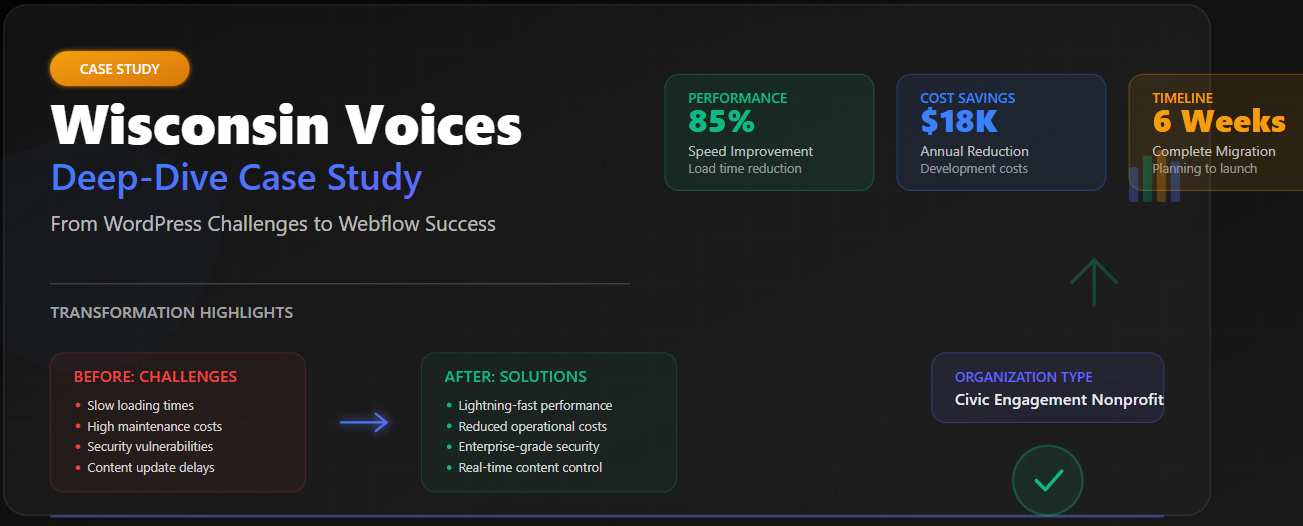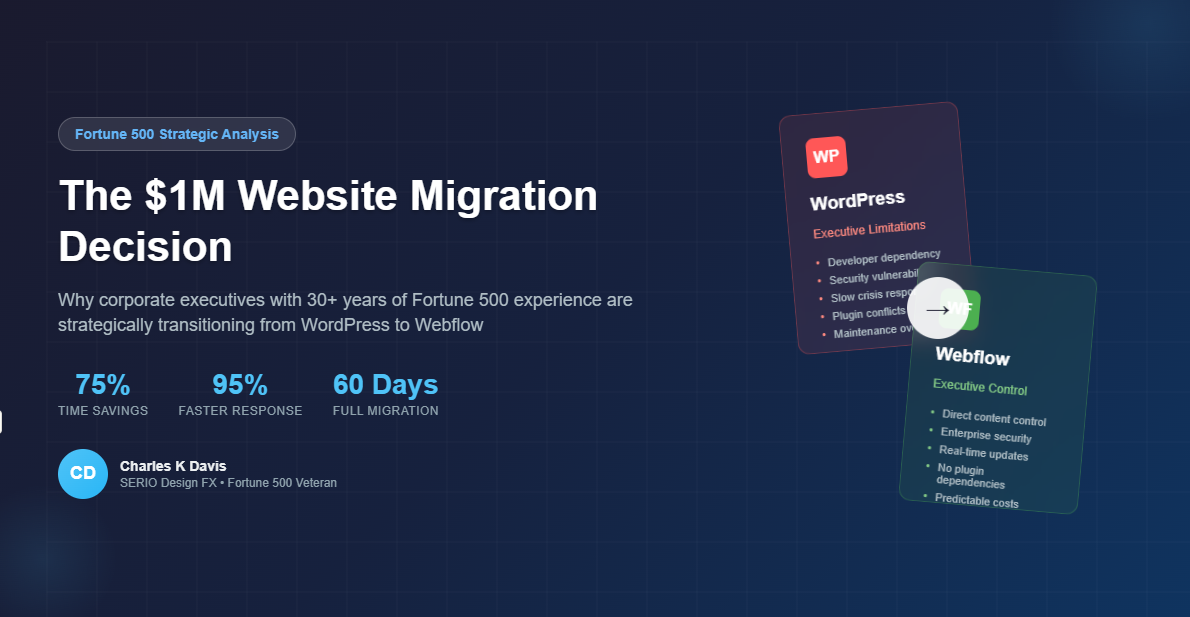How Policy Disruption Creates Billion-Dollar Opportunities (And Why You Have 90 Days To Move)

I Was There When AT&T Fell Apart. Here's What Most Executives Don't Know About What Happens Next.
It's 1982, Illinois Bell. Conference room full of executives who thought their careers were over.
The U.S. government had just broken up AT&T—the most powerful monopoly in American history. Seven regional Bell companies. Overnight restructuring. Complete market upheaval.
I was working in that chaos. Watching panic. Hearing predictions of telecom collapse.
They were all wrong.
What happened next wasn't collapse. It was the biggest wealth creation event in modern business history.
And it's happening again. Right now.
Most executives are watching the current U.S. government shutdown and asking: "How do we survive this?"
Wrong question.
The right question: "Which billion-dollar opportunities are about to open up—and how do we position before everyone else sees them?"
I've lived through three major government-created market disruptions. I know the pattern. I know the signals. And I know the 90-day window you have to move before the opportunity closes.
Let me show you what most executives miss.
The Pattern Nobody Teaches: Government Disruption = Market Creation
Historical Pattern #1: The AT&T Breakup (1982-1984)
When the government broke up AT&T, conventional wisdom said telecommunications was dead.
Here's what the experts predicted:
- Service quality would collapse
- Innovation would stall
- Consumers would suffer
- The industry would fragment into chaos
Here's what actually happened:
New Companies Born:
- Sprint emerged from Southern Pacific Railroad's communications division
- MCI transformed from a small microwave company into a telecommunications giant
- Hundreds of competitive local exchange carriers (CLECs) launched
- Equipment manufacturers like Northern Telecom exploded in market share
New Industries Created:
- The cellular phone industry (freed from AT&T's monopoly control)
- Long-distance competition drove prices down 60% in five years
- Competitive equipment markets (before the breakup, you couldn't even own your phone)
- The modern internet itself (here's the part most people don't know)
The UNIX Story: How the AT&T Breakup Created the Internet
When the government forced AT&T to divest, they also forced the sale of Unix Software Labs—AT&T's operating system division.
UNIX had been developed at Bell Labs (AT&T's research arm) but was kept proprietary and restricted.
The breakup changed everything:
What happened when UNIX was forced out of AT&T:
- Universities could finally access and modify UNIX code
- BSD (Berkeley Software Distribution) emerged from UC Berkeley
- TCP/IP networking protocols were developed on UNIX systems
- The foundation for Linux was built on UNIX principles
- Nearly every internet server, router, and network device traces back to UNIX architecture
- Steve Jobs purchased a version of UNIX (NeXTSTEP, based on BSD) that became the foundation for macOS
The Apple Connection:
When Steve Jobs left Apple and started NeXT Computer, he built NeXTSTEP operating system on BSD UNIX—which was only available because the AT&T breakup freed UNIX from monopoly control.
When Jobs returned to Apple in 1997, he brought NeXTSTEP with him. That UNIX-based system became Mac OS X (now macOS).
Every iPhone, iPad, and Mac you see today runs on an operating system that traces directly back to the UNIX code freed by the AT&T breakup.
The cascade:
AT&T breakup (1982) → UNIX freed from monopoly → BSD UNIX developed → Steve Jobs builds NeXTSTEP on BSD (1985-1996) → NeXTSTEP becomes Mac OS X (2001) → macOS powers Apple's $3 trillion market cap (2024)
One government antitrust action in 1982 is still creating wealth in 2025.
The direct line: AT&T breakup → UNIX freed from monopoly control → Internet infrastructure development → Linux and open-source movement → Cloud computing → The entire modern internet economy
I was working in UNIX administration during this era. I watched the operating system go from locked-down AT&T property to the foundation of global internet infrastructure.
That's not coincidence. That's the pattern of government disruption creating opportunity.
Without the AT&T breakup forcing UNIX into the open market, we wouldn't have the internet as we know it today.
The Wealth Transfer:
AT&T shareholders in 1982: Worried about their investment collapsing.
AT&T shareholders in 1992: Held stock in eight separate companies, combined value up 300%+ from the breakup.
Early movers who recognized the pattern: Built billion-dollar companies in cellular (McCaw Cellular, sold to AT&T for $11.5 billion), long-distance (WorldCom, before its later collapse), and infrastructure.
I was at Illinois Bell during this transformation. I watched executives who saw disruption as threat get left behind. And I watched the ones who saw it as opportunity build empires.
The pattern was clear: Government monopoly breakup = massive market creation.
But most people missed it because they were focused on the chaos, not the opportunity.
Historical Pattern #2: The End of the Postal Monopoly
For over 200 years, the U.S. Postal Service held a government-protected monopoly on mail delivery.
Then policy disruption hit.
The Signal Events:
- 1971: USPS reorganized, opening cracks in the monopoly
- 1973: FedEx launched overnight delivery (initially illegal under postal monopoly)
- 1970s-1980s: Regulatory challenges and court cases eroded postal exclusive access
- Deregulation wave allowed private competition
What the Experts Predicted:
- Private delivery couldn't compete with government infrastructure
- Rural areas would lose service
- Costs would skyrocket
- The system would fragment
What Actually Happened:
FedEx: Founded in 1971 with 14 small aircraft. By 1983, annual revenue exceeded $1 billion. Today: $90+ billion in annual revenue.
UPS: Expanded from regional package service to global logistics giant. Today: $100+ billion in annual revenue.
The Entire Modern Logistics Industry:
- Same-day delivery
- Package tracking technology
- Global supply chain infrastructure
- E-commerce enablement (Amazon couldn't exist without FedEx/UPS infrastructure)
The Wealth Transfer:
USPS in 1970: Government monopoly, zero private competition.
Logistics industry in 2025: $1.6 trillion market with thousands of companies, millions of jobs, and entire new economic sectors.
The pattern repeated: Government policy disruption didn't destroy mail delivery. It created the modern logistics industry.
And the executives who saw it coming in the 1970s built generational wealth.
The Current Signal: Government Shutdown + Permanent Eliminations
Right now, most executives are watching the U.S. government shutdown as a crisis to survive.
They're missing the signal.
What's Different About This Shutdown:
This isn't a temporary funding gap that resolves in two weeks.
The current administration has stated explicitly: Parts of the U.S. government will be permanently eliminated.
Agencies will close. Regulatory functions will disappear. Monopolistic government controls will end.
The Historical Echo:
When AT&T broke up, the signal wasn't the announcement. It was the court actions leading up to it.
When the postal monopoly ended, the signal wasn't one law. It was years of regulatory erosion and legal challenges.
Right now, the signals are everywhere:
Federal agencies facing elimination or massive restructuring:
- Departments with overlapping functions being consolidated
- Regulatory agencies with monopolistic control under review
- Government services currently protected from private competition being challenged
The 90-Day Court Action Window:
Over the next 90 days, legal proceedings will determine:
- Which agencies actually close
- Which regulatory functions get transferred or eliminated
- Which government monopolies on services will break apart
- Which private sector opportunities will open
This is your roadmap.
The executives watching these court actions aren't seeing legal proceedings.
They're seeing billion-dollar opportunity maps.
Why Most Executives Miss The Opportunity
I've watched three major government-created market disruptions in my career:
- AT&T breakup (Illinois Bell, 1982)
- MCI/WorldCom collapse (managed infrastructure through the crisis, 2001)
- Housing market crash (rebuilt from zero, 2008)
Every single time, the pattern is the same:
Phase 1: The Signal (90 days before)
- Court actions begin
- Policy changes announced
- Regulatory frameworks challenged
- Media focuses on "crisis" narrative
What most executives do: Watch the news and worry.
What winners do: Map which monopolies are breaking and which markets will open.
Phase 2: The Panic (30-60 days)
- Government functions start shutting down
- Layoffs begin
- Media amplifies crisis narrative
- "Experts" predict economic disaster
What most executives do: Freeze. Wait for clarity. Delay decisions.
What winners do: Position aggressively while competitors are paralyzed.
Phase 3: The Opportunity Window Closes (60-90 days)
- New market opportunities become obvious
- Early movers already positioned
- Capital flows toward emerging sectors
- Late movers scramble to catch up
What most executives do: Finally recognize the opportunity—after it's too late to capture early-mover advantage.
What winners did: Already built infrastructure, hired key talent, and captured market share 90 days earlier.
Phase 4: The Wealth Transfer (1-3 years)
- New industries fully formed
- Billion-dollar companies emerge
- Executives who saw it early become industry leaders
- Everyone else wishes they'd moved sooner
What I'm Watching Right Now (And Why You Should Too)
As a fractional CMO/CTO who survived the AT&T breakup and rebuilt companies through two economic collapses, I'm tracking specific signals that indicate which markets are about to open.
Education Policy Disruption:
- Federal education department restructuring
- Title IX regulatory changes
- Student loan servicing transformations
- Private sector education opportunities expanding
Government Contractor Market Shifts:
- Agency eliminations changing procurement landscape
- Defense and infrastructure spending reallocation
- Technology modernization requirements
- Consulting opportunities from government-to-private transitions
Infrastructure & Construction:
- Deregulation of federal construction requirements
- State-level infrastructure authority expansion
- Public-private partnership acceleration
- Building code and permitting modernization
B2B Service Markets:
- Government services being privatized
- Regulatory compliance shifting to private certification
- Data management and technology infrastructure needs
- Consulting markets from organizational restructuring
These aren't predictions. These are patterns I've seen before.
When government monopolies break, private markets boom.
The 90-Day Action Plan: What To Do Right Now
You have 90 days before this opportunity window closes.
Here's what executives who recognize the pattern are doing:
Days 1-30: Signal Recognition
- Track court actions and legal proceedings
- Identify which government functions face elimination
- Map overlapping private sector capabilities
- Research historical breakup patterns
Days 31-60: Strategic Positioning
- Evaluate organizational capabilities for emerging markets
- Build relationships with displaced government talent
- Prepare service offerings for privatizing functions
- Secure early-mover capital and resources
Days 61-90: Market Entry
- Launch services targeting newly opened markets
- Capture displaced government contracts
- Hire top talent from closing agencies
- Build infrastructure for scaling
After Day 90: The opportunity is still there—but you're competing with everyone who finally saw the pattern.
Why This Time Is Different (And Why It's Bigger)
The AT&T breakup created billions in wealth.
The postal monopoly end created trillions in logistics value.
This government shutdown pattern could be bigger than both combined.
Why?
Scale: Multiple agencies and departments, not just one monopoly.
Timing: Technology infrastructure allows faster private sector scaling than in the 1980s.
Global Impact: U.S. policy disruption affects global markets (I'm watching this from Cebu, Philippines—home to Accenture, JP Morgan, and 50+ global BPO operations—and seeing international companies position for these opportunities).
Market Readiness: Private sector has decades of infrastructure development and capital ready to absorb functions leaving government control.
The executives who recognize this pattern now will build the next generation of billion-dollar companies.
The ones who wait will read about them in business journals in five years.
My Positioning: Why I'm The Executive Who Sees This Coming
I don't just study government disruption patterns. I've lived through them.
Illinois Bell (1982): I was there during the AT&T breakup. I watched the chaos. I saw the opportunity. I learned the pattern.
MCI/WorldCom (2001): I managed infrastructure through one of the largest corporate collapses in history. I rebuilt systems while the company imploded around me. I survived because I saw the signals six months before the headlines.
Housing Crash (2008): I lost everything and rebuilt from zero. Twice. I learned that survival isn't about having the best resume—it's about seeing the pattern before everyone else.
Today: I operate from Cebu IT Park—a global BPO hub serving Fortune 500 companies. From here, I see what U.S.-based executives miss: how global companies position for U.S. policy disruptions before they hit mainstream news.
I'm a fractional CMO/CTO who specializes in turning crisis into revenue.
But more than that: I'm the executive who recognizes government disruption as the biggest wealth creation opportunity in a generation.
And I'm tracking the signals in real time.
What Happens Next
The next 90 days will determine who captures billion-dollar opportunities and who watches from the sidelines.
Government shutdown business opportunities in 2025 won't wait for executives to get comfortable.
The lessons from the AT&T breakup are clear: Move early or miss entirely.
The pattern from the postal monopoly end is proven: Policy disruptions create billion-dollar companies—but only for those who see the signal.
Most executives will read this article and think: "Interesting perspective."
A small number will recognize the pattern and take action.
Those are the ones who will build the next FedEx. The next Sprint. The next billion-dollar company born from government disruption.
The question isn't whether this opportunity exists.
The question is: Are you watching the signals or waiting for permission?
Get Your Opportunity Signals
I publish real-time strategic intelligence on government policy disruptions and the market opportunities they create.
MAD 2.0 - Maverick Advantage Newsletter: Weekly briefings on signals most executives miss, patterns that predict market creation, and 90-day opportunity windows before they close.
This isn't generic business news. This is pattern recognition from someone who's survived three government-created market disruptions and built the playbook for turning crisis into revenue.
Subscribe: MAD 2.0
Or download industry-specific opportunity guides:
- Education Policy Disruption Playbook
- Government Contractor Survival Guide
- Infrastructure Policy Opportunity Framework
- B2B Market Creation Strategy
Stop reading the news. Start seeing the signals.
The 90-day window is open. The pattern is clear. The opportunity is massive.
What you do next determines whether you build the next billion-dollar company or read about someone else who did.
About Charles K. Davis
Fractional CMO/CTO | AT&T Breakup Survivor | Crisis-to-Revenue Specialist
I help executives turn government disruption into market opportunities. With 25+ years surviving Fortune 500 infrastructure crises—from Illinois Bell during the AT&T breakup to managing MCI/WorldCom network collapse—I recognize patterns that create billion-dollar companies before they hit mainstream news.
Based in Cebu, Philippines, serving global crisis-stage companies $3M+.







.jpg)



.jpg)











.jpg)


.jpg)
.jpg)

.jpg)


.webp)



















.png)

.png)





.png)





.png)






























